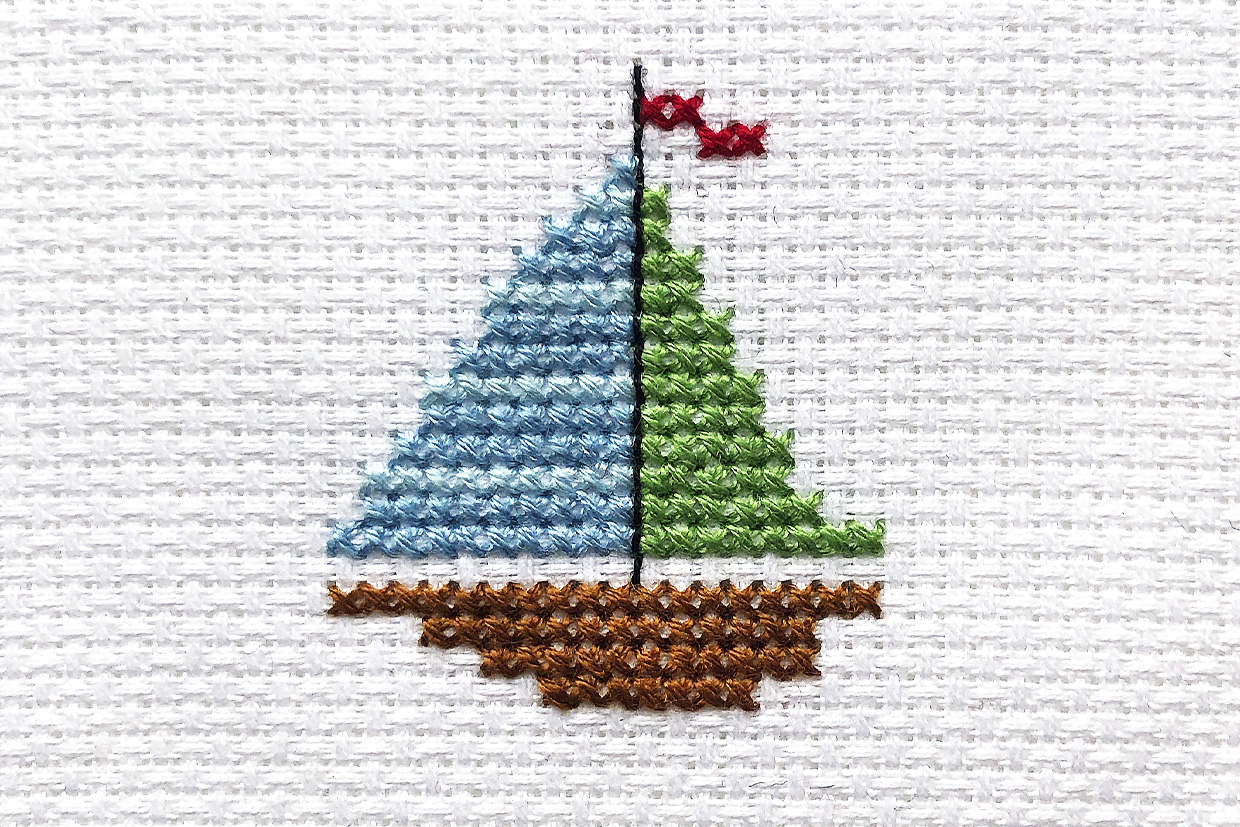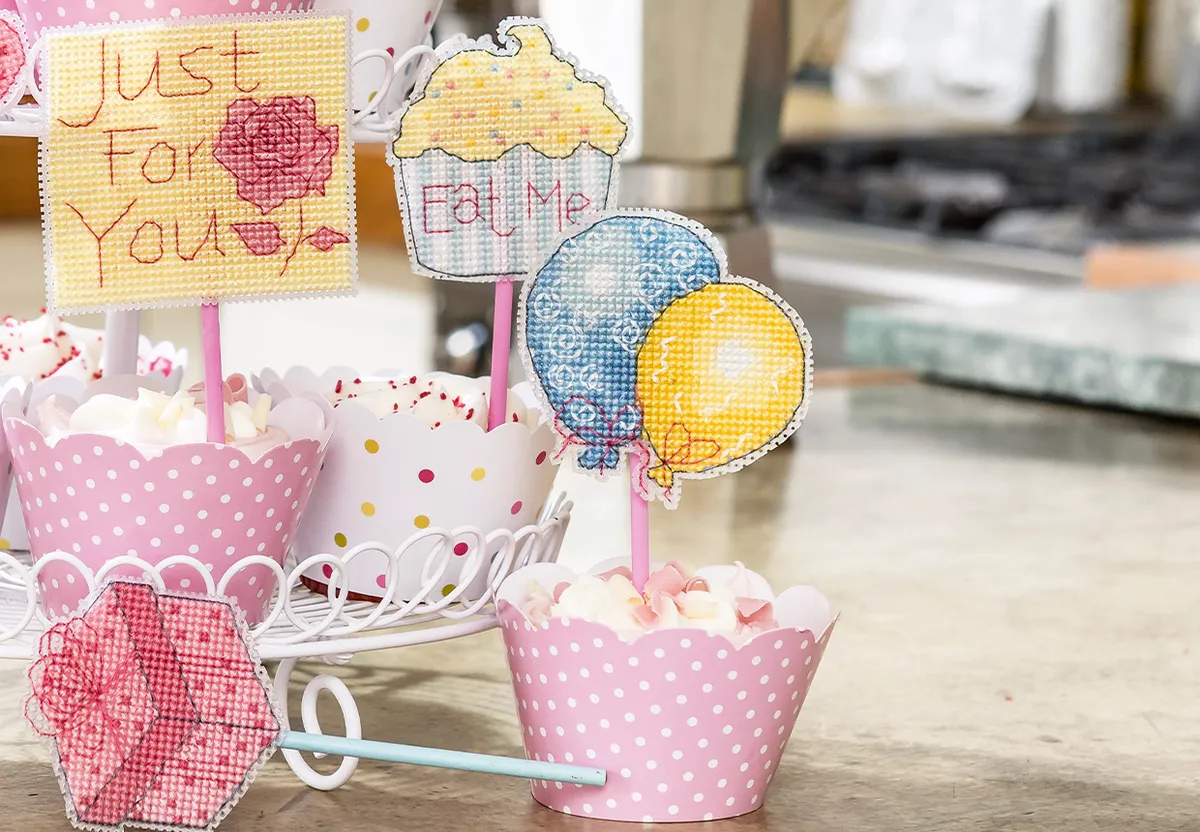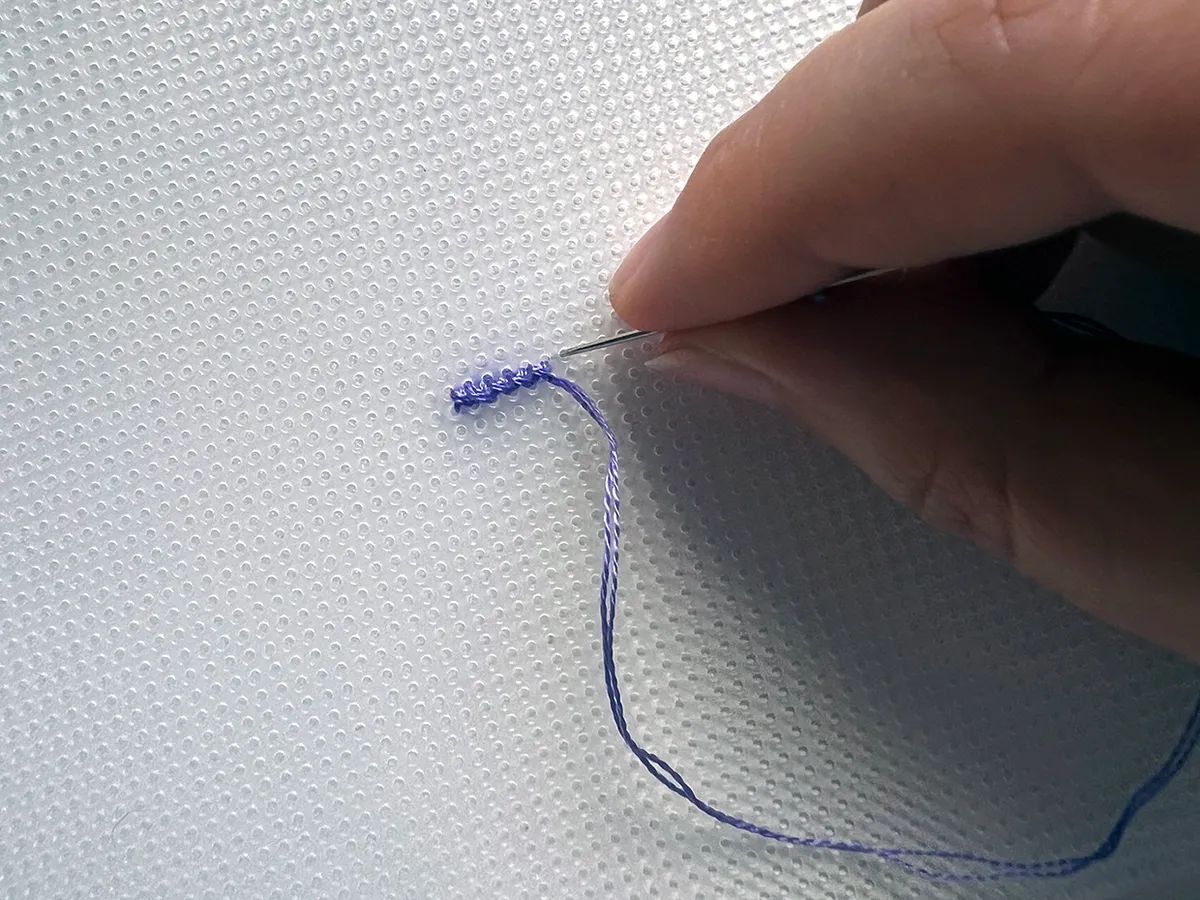Overstitching plastic canvas edges
Overstitching involves using thread to cover up the exposed edges of plastic canvas. This gives it a seamless-looking finish and is done after your cross stitch is complete and has been cut out.
To overstitch on a 14-count canvas, thread your needle with three or four strands of stranded cotton for good coverage.
Step 1
Secure the thread at one end under completed stitches on the reverse side, then bring the needle up over the top of the canvas and back down through the first hole along. The thread should travel over the top of the exposed edge, covering it up. Repeat this process, going through the next hole along each time.
Step 2
Once you reach the other end, secure the thread under completed stitches on the reverse side of the canvas and snip off.
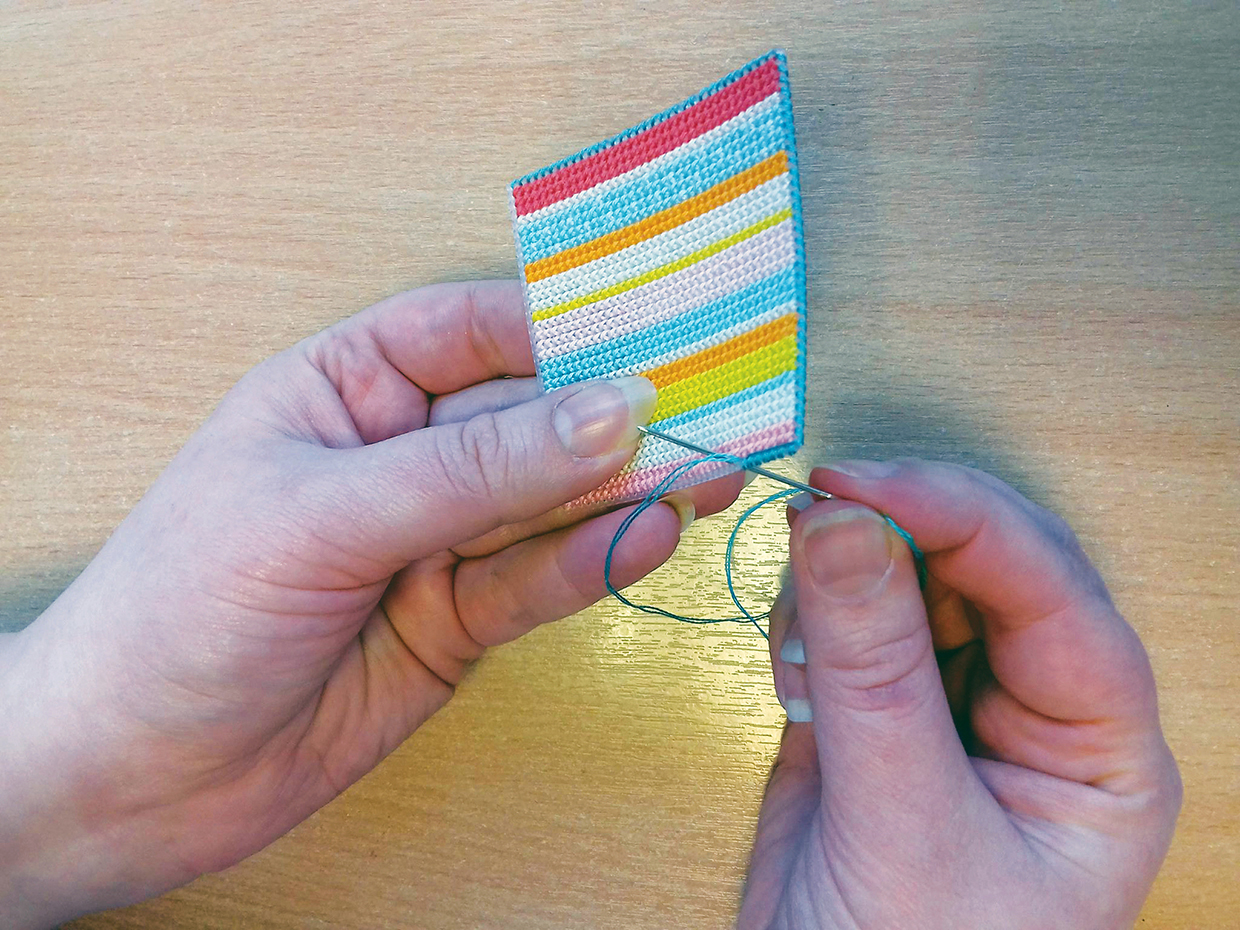
Whipstitching plastic canvas together
Whipstitching, or whip stitch, allows you to join two separate pieces of plastic canvas together. It is done after your cross stitch is complete and has been cut out.
To whipstitch 14-count canvas pieces together, thread your needle with three or four strands of stranded cotton for good coverage.
Step 1
Secure the thread at one end under completed stitches on the reverse side. Holding your two pieces of canvas in one hand, line up the edges at the angle at which they will be joined together. Take your needle through the first hole on both pieces at the same time, pulling the thread all the way through.
Step 2
Transfer your needle over the top of both pieces, back to the side of the canvas where you started from, and then through the next hole along. Repeat this process, going through the next hole along each time. You should end up with slightly diagonal stitches, which join across the two pieces of canvas.
Step 3
Once you reach the other end, secure the thread under completed stitches on the reverse side of the canvas and snip off.
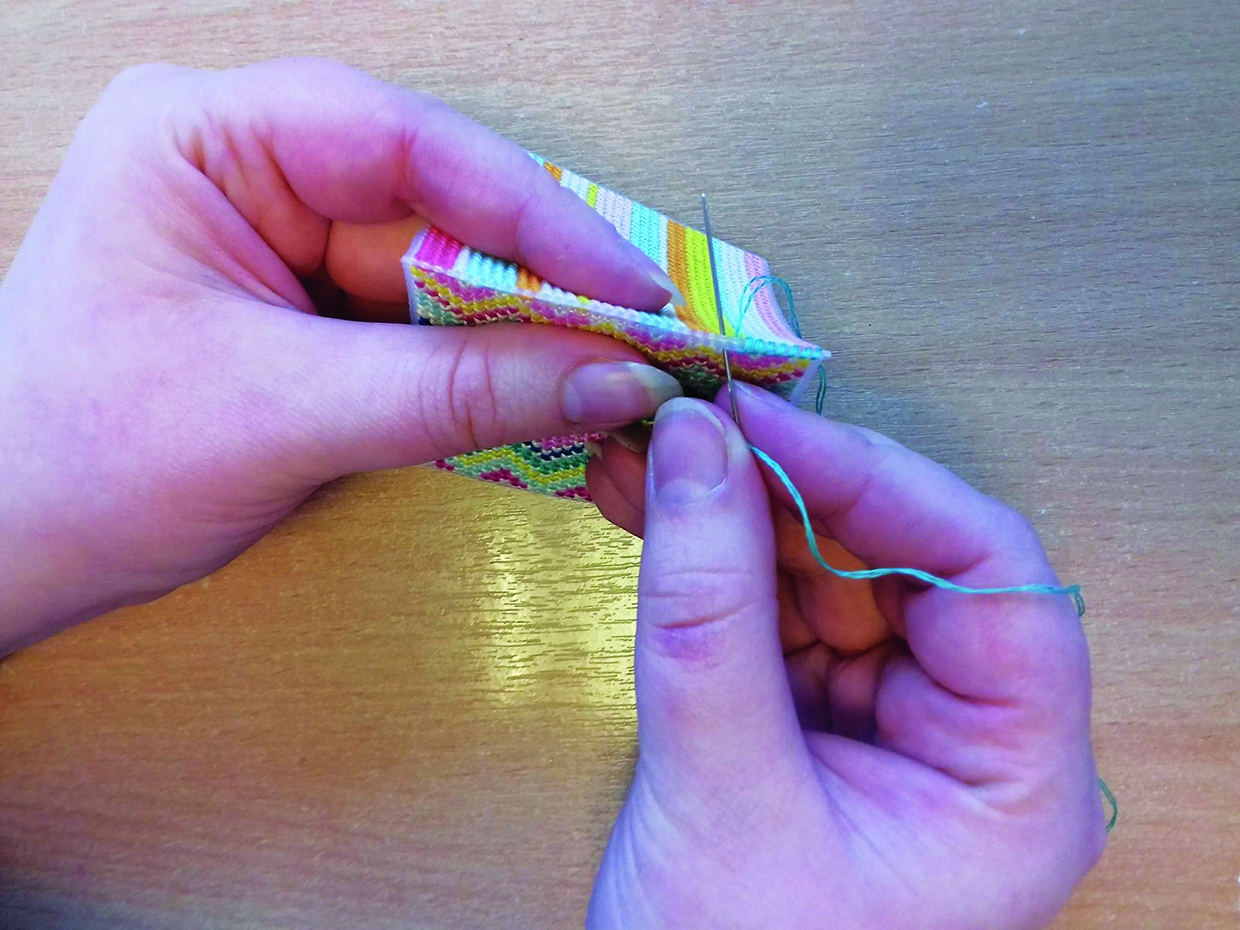
Make a 3D plastic canvas box
Put your new plastic canvas stitching skills to work and make a handy 3D box with our free charts, designed by Tiny Modernist– they’re perfect to use as desk tidies for storing stationery, or even keeping your crafting accessories inside. They make pretty gift boxes too.
Each box is created from a set of six patterned squares that are quick and easy to finish in whole stitches only. Mix and match the squares or stitch the same for each box – the choice is yours! You could even change the thread shades to use up ones in your stash.
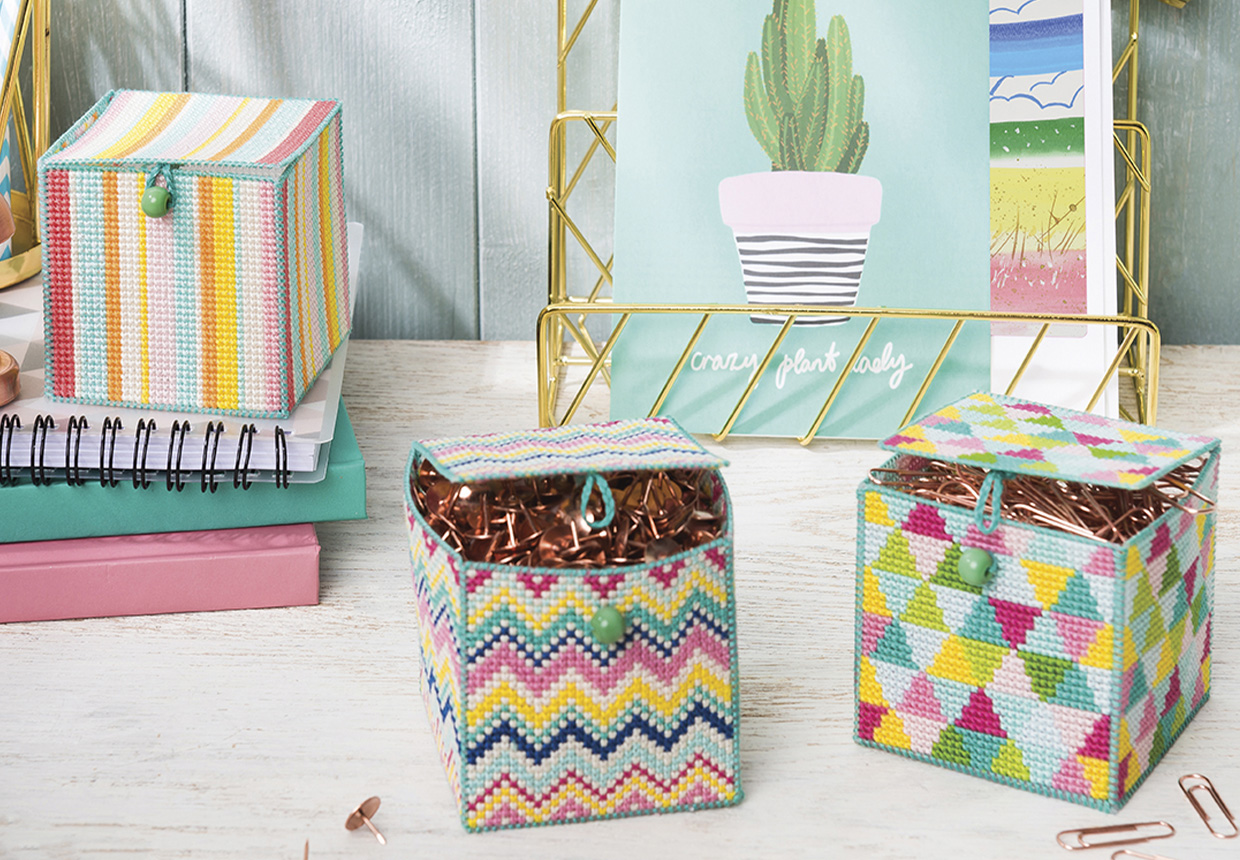
Key features
- Stitch time: Approx. 4 hours per square
- Stitch Types: Cross stitch
- Ease of Stitching: Beginner
You will need
- Canvas: 14-count clear plastic canvas measuring 8x8cm (3¼x3¼in) for each panel
- Threads: Stranded cotton as listed in the key
- Needle: Size 24 tapestry needle
- Large bead
- Narrow cord
Download the plastic canvas box PDF pattern
Download the plastic canvas box PDF pattern
Stitch more plastic canvas projects
The World of Cross Stitching Etsy store is a great source of plastic canvas projects to try. Take a look at some of our favourites:
1. 3D plastic canvas train
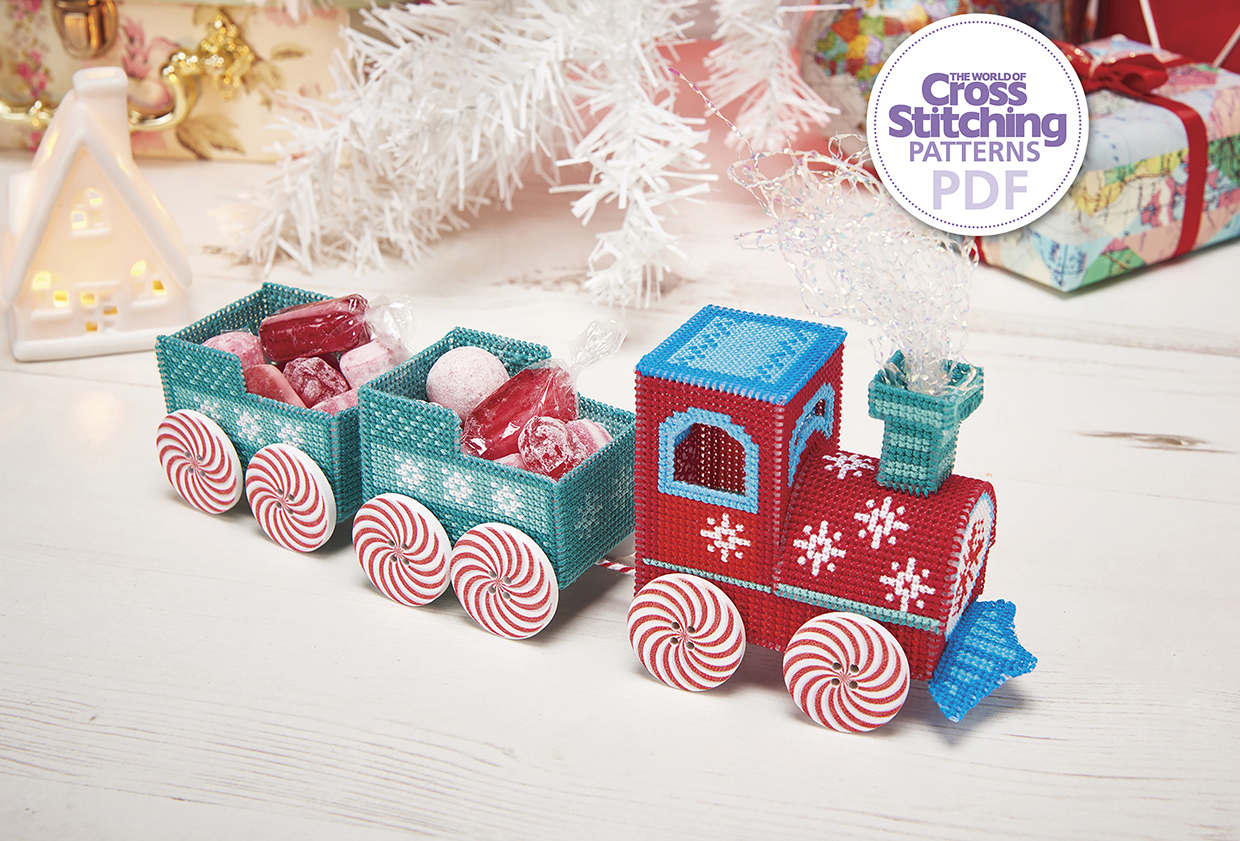
Make a fun 3D train and carriages to hold sweets and other treats, designed by Fiona Baker. It’s a great decoration to display or gift for all the family too. You get a PDF instant download digital chart pack, which includes colour and black and white patterns, plus a full step-by-step tutorial with photos for assembling your models.
2. 3D plastic canvas Santa sleigh
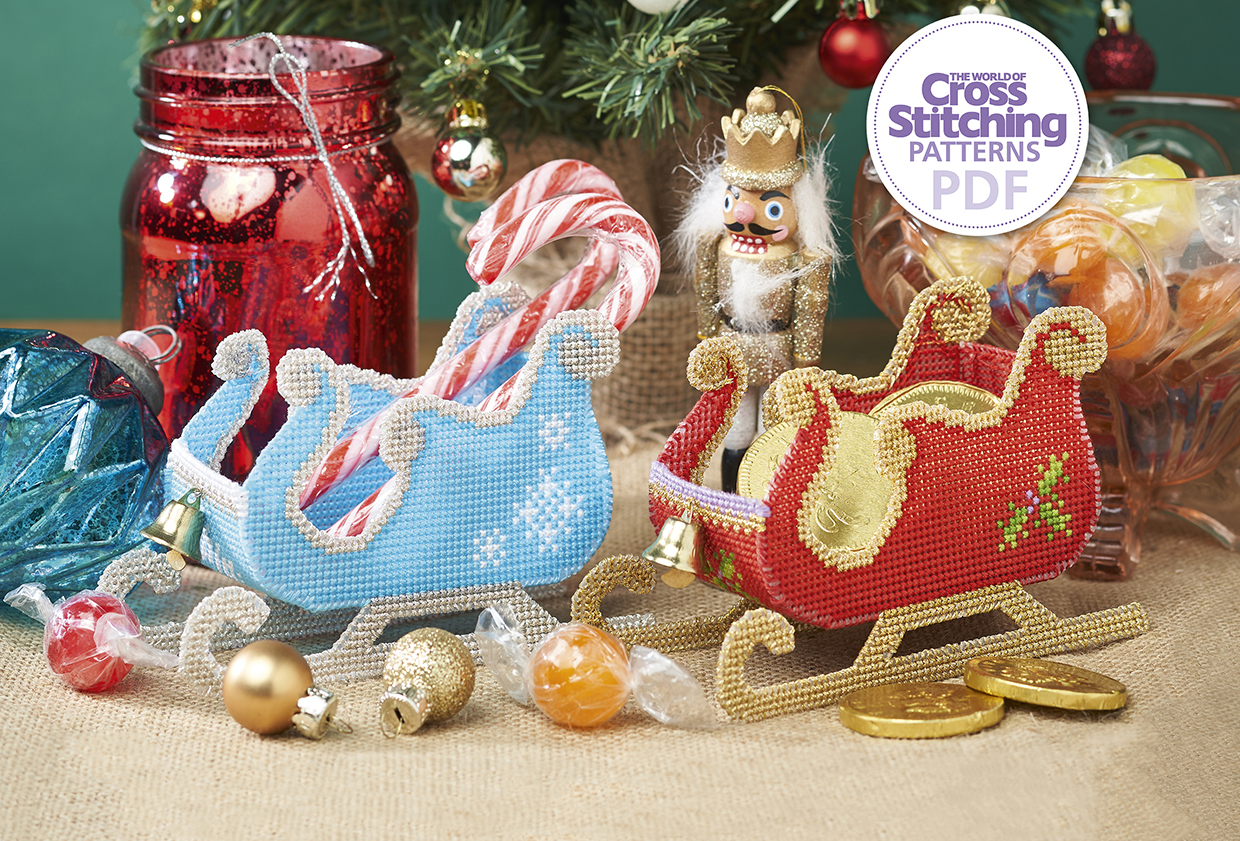
Make fun 3D plastic canvas Santa sleighs this holiday season with these treat-filled creations – there’s 2 different designs to stitch and make in just 6 easy steps! Designed by Fiona Baker, you receive a PDF download digital chartpack, which includes colour and black and white patterns, and a full step-by-step tutorial with photos for assembling your models.
3. Plastic canvas tree ornaments
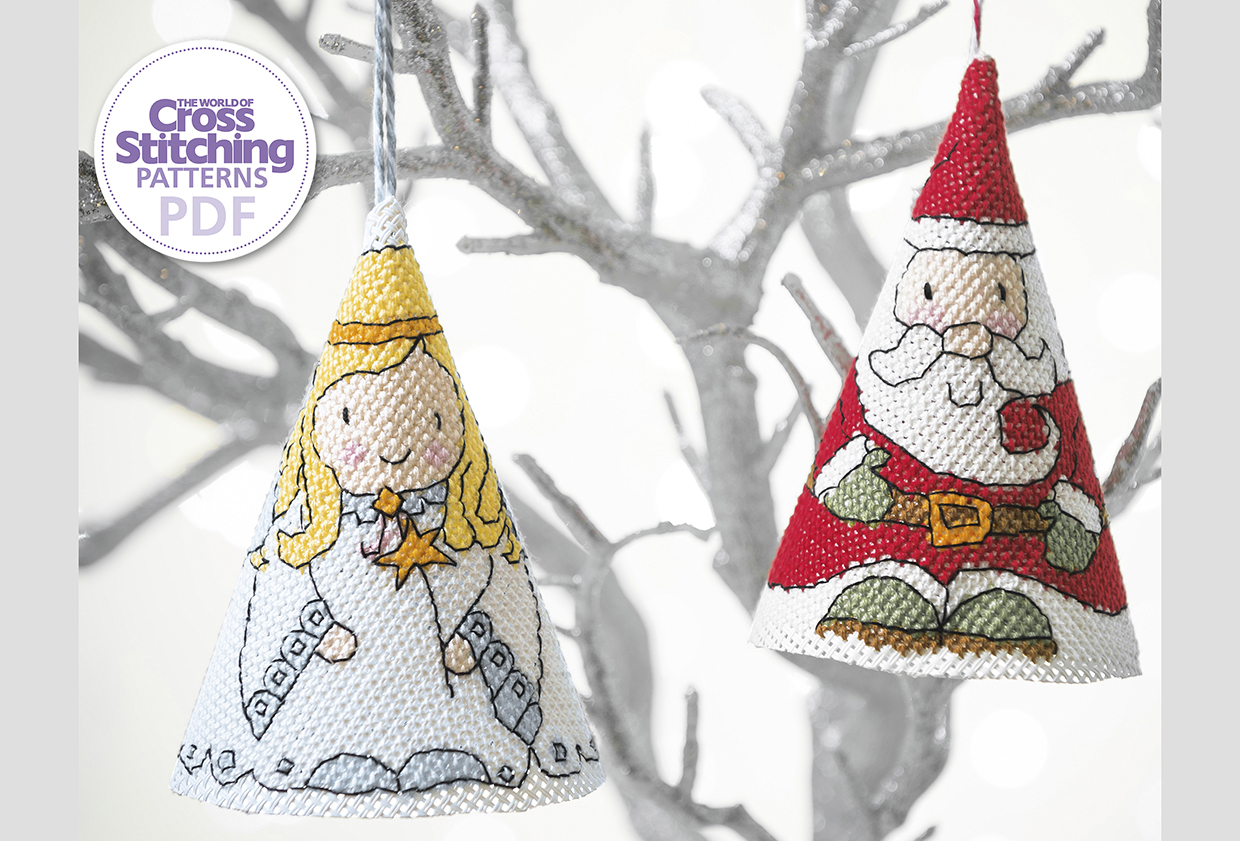
Make a jolly Santa and a pretty angel into cute tree ornaments, designed by Durene Jones – they’re so easy to make! Get a set of two patterns with making-up instructions for creating your perfect cone decorations. They work best stitched on plastic canvas, plastic aida or perforated paper.
Where to buy plastic canvas
Plastic canvas comes in size 14-count for standard cross stitch. This is the same size as using a 14-count aida, or 28-count evenweave. The count refers to the number of holes per inch (or HPI), so the smaller the count, the larger it will actually be.
14-count clear plastic canvas
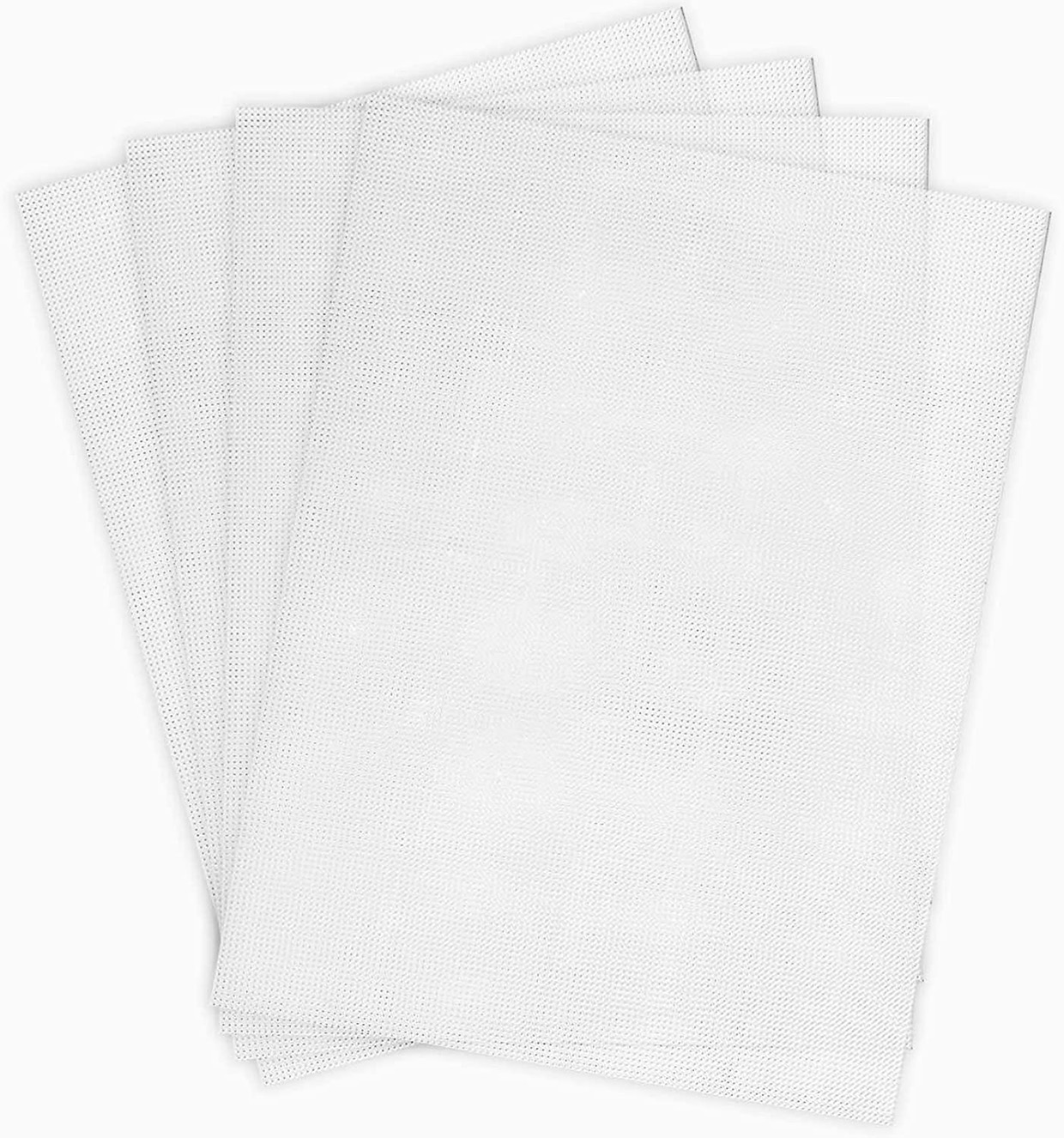
Always source good quality clear plastic canvas for your cross stitching. Craft supplier Lakeside Needlecraft, sells it by the sheet or in multipacks of between 2 and 18. It comes as 8.25×11 inch size sheets, which are perfect for cutting out and using as much as you need.
Other types of canvas
Whilst they may look similar and work in much the same way, be aware that other sizes and types of plastic canvas aren’t necessarily the same product. Let’s explore some of the other types:
Tapestry Canvas
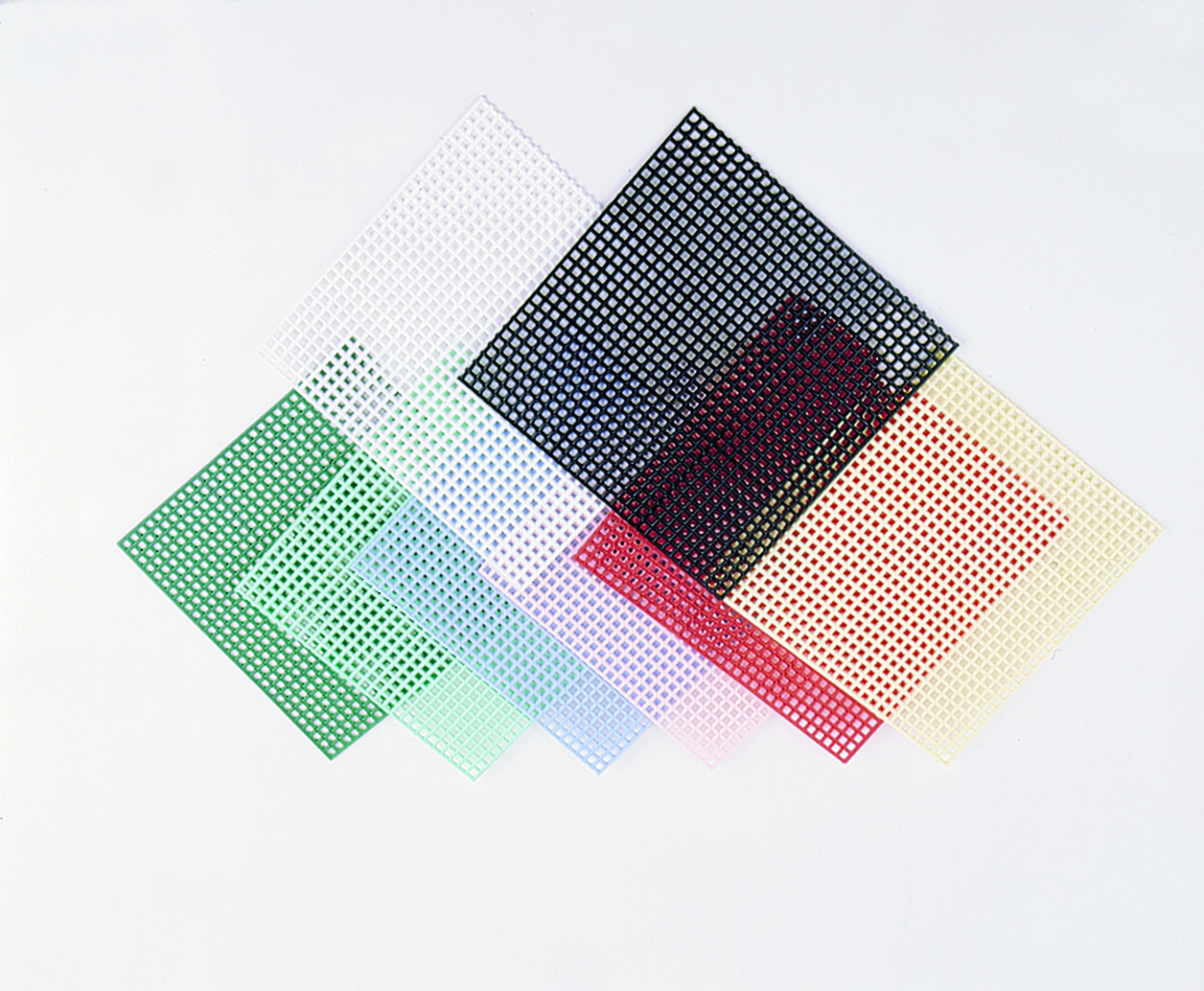
You may see other counts including 5, 7 and 10-count canvas available, but this is actually needlepoint or tapestry canvas. The holes are square, rather than round, and you need to use thicker tapestry wool for stitching to fill the gaps. You may also find it in a variety of colours and thicknesses.
This style of tapestry canvas is often marketed as plastic canvas, so look carefully at the shape of the holes to differentiate. Square-holed canvas will not give you the best finish for your cross stitching.
However, this larger count tapestry canvas is great for use with children, as it’s a good way to introduce them to cross stitch – the larger holes and stability of the material make it easier for little hands to count and hold on to.
You can use tapestry wool and a plastic tapestry needle for safer stitching. Check out our collection of children’s cross stitch patterns with ideas to get them started.
Plastic aida
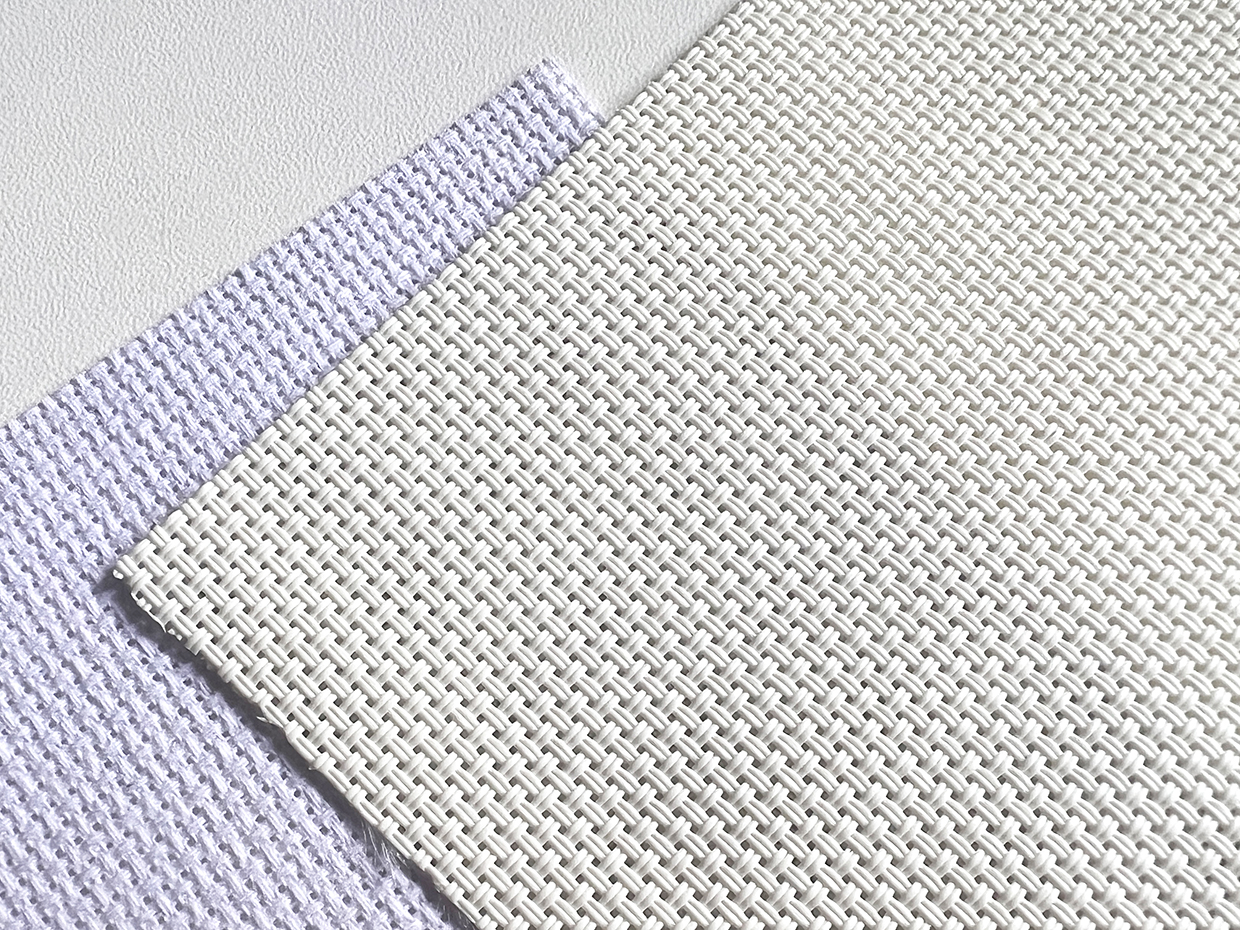
You may have also heard of plastic aida, however, this should not be used as a substitute in plastic canvas projects.
Its appeal lies in the way it looks like the weave of aida fabric, creating a more natural finish for unstitched areas. However, this also means it behaves like aida when cut too, and can actually fray and not cut out smoothly.
It’s also a lot more flexible, and won’t hold or join together for 3D makes in the same way as plastic canvas.
Plastic shapes
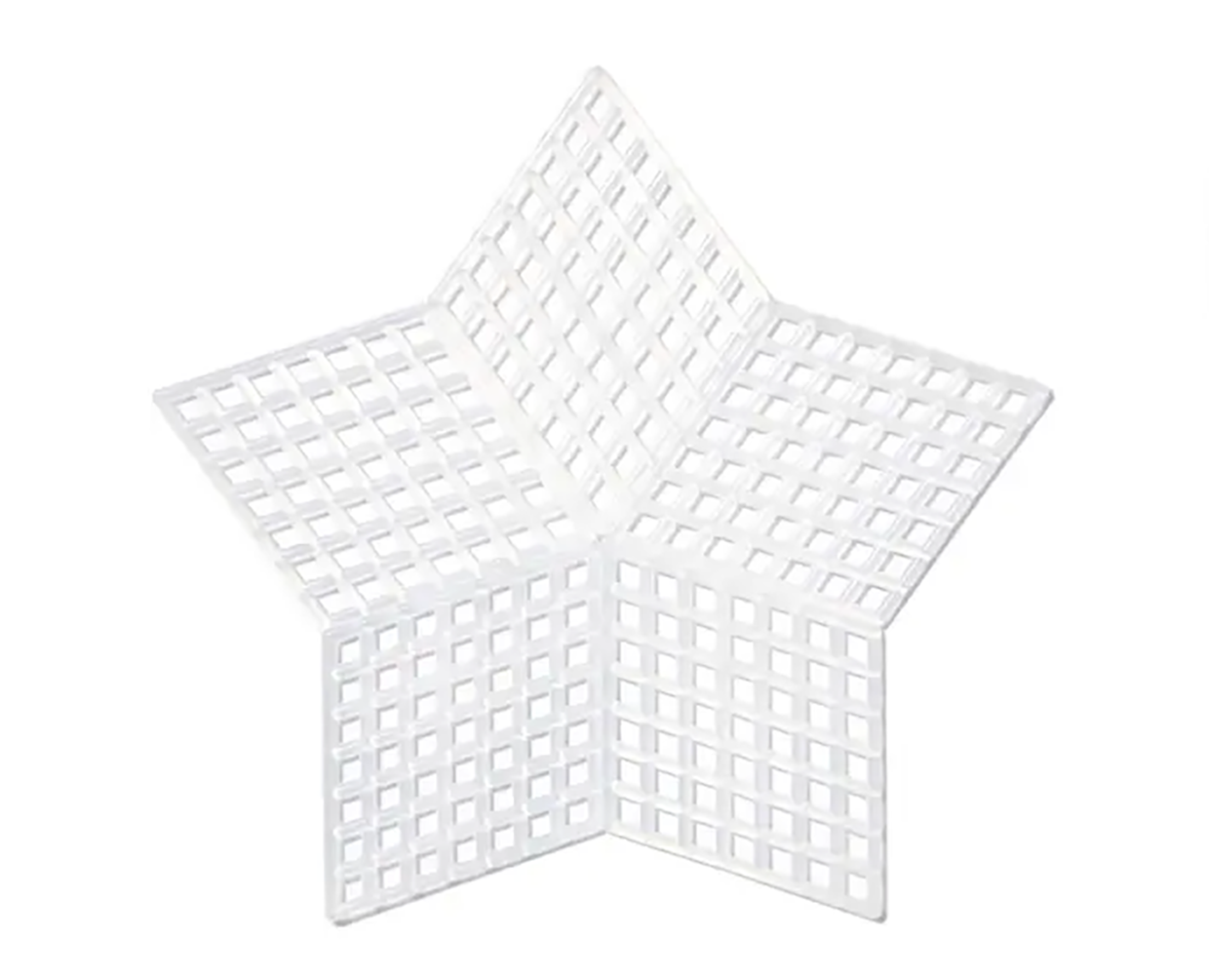
Tempted by fancy-shaped pieces of plastic canvas? Remember the holes need to be in a gridded uniform pattern for cross stitching, so canvases that are shaped, such as circular, stars or flowers etc, are intended for tapestry and embroidery work only.
Expand your stitching skills
It’s always fun to try new stitching materials and techniques. Plastic canvas is great for stretching your skills, even if you’re a beginner stitcher, as it opens up a whole new world of 3D cross stitch. This means you can make things that are otherwise impossible on aida or evenweave fabrics.
Try designing your own patterns
Now you’ve got to grips with plastic canvas, why not have a go creating your own design to stitch on it? Read our comprehensive guide for some top tips and give making your own cross stitch patterns a try.
